The Post Office Has Been Used For Partisan Politics Before—Until Uniforms Came Along
Over the past month, the Post Office’s slogan has been updated: “Neither snow nor rain nor heat nor gloom of night nor fascism,” as a widely-shared Twitter meme created by a San Francisco-based graphic designer put it. The graphic in the style of an ad was good enough to fool plenty of Twitter users, forcing the postal worker’s union to issue a statement denying involvement. It also touched nerves frayed by whatever the hell it is that Donald Trump is doing to the USPS in order to get reelected. But partisan politicization isn’t a new problem for the Post Office. In fact, fighting overzealous leaders is one of the very reasons for the modern postal system’s invention in 1863—and its uniforms were a key part of the fight.
The Post Office was built up by America’s first Postmaster General Benjamin Franklin, who started the gig while the U.S. was still under British rule. (Funnily enough, the Crown dismissed Franklin after he forwarded a bundle of letters describing revolts in the colonies and was deemed too sympathetic to the burgeoning nation). Franklin resumed his role as Postmaster General in 1775 because he saw the Post Office as essential to a functioning democracy. Mail carriers were performing a duty to their country: in its early days, the postal service mostly delivered newspapers. “[Franklin] began to think of the colonies not as individual provinces but as parts of a potential nation, bound together by shared institutions like the Post Office,” according to Devin Leonard in his book Neither Snow Nor Rain: A History of the United States Postal Service.
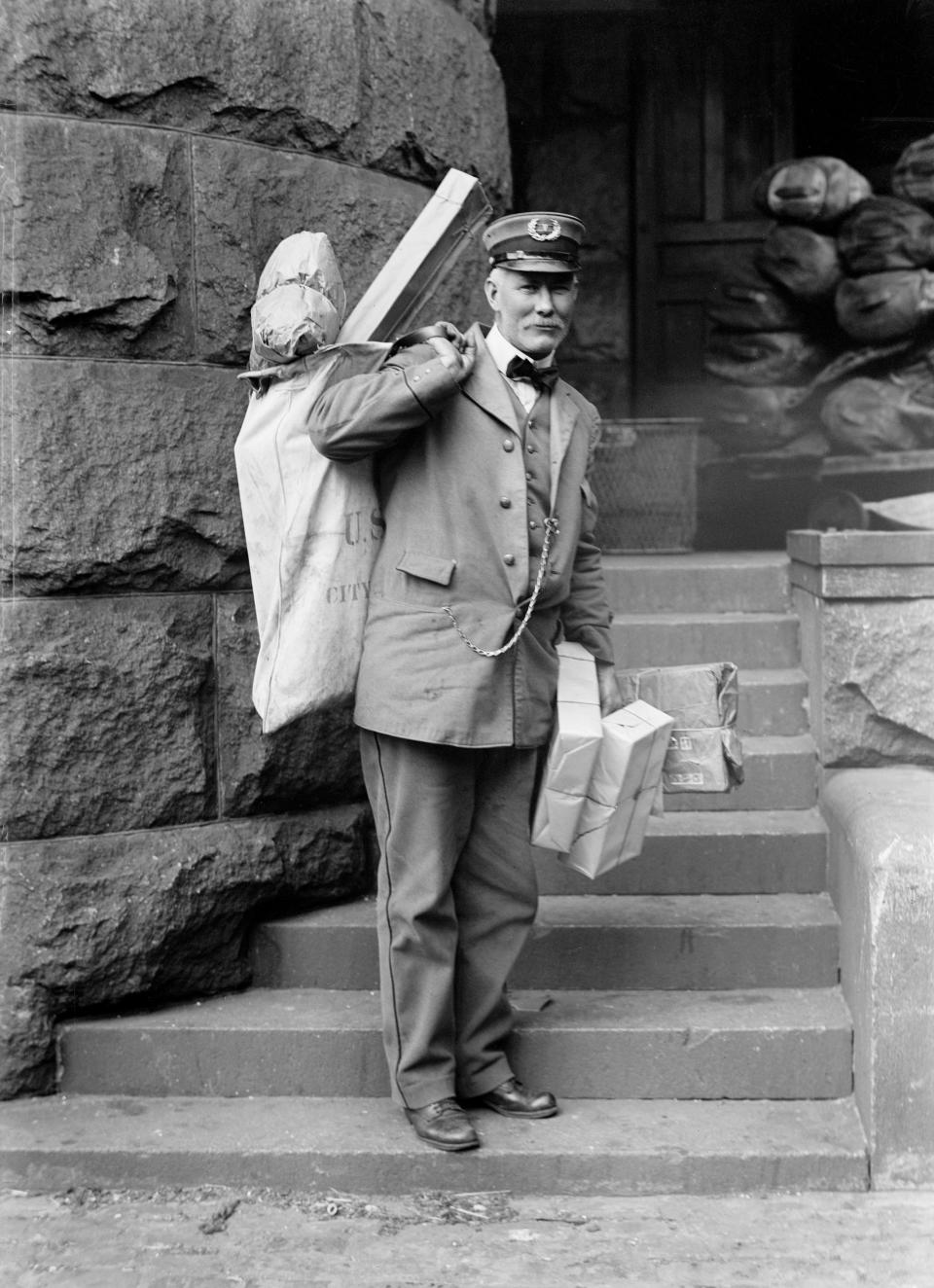
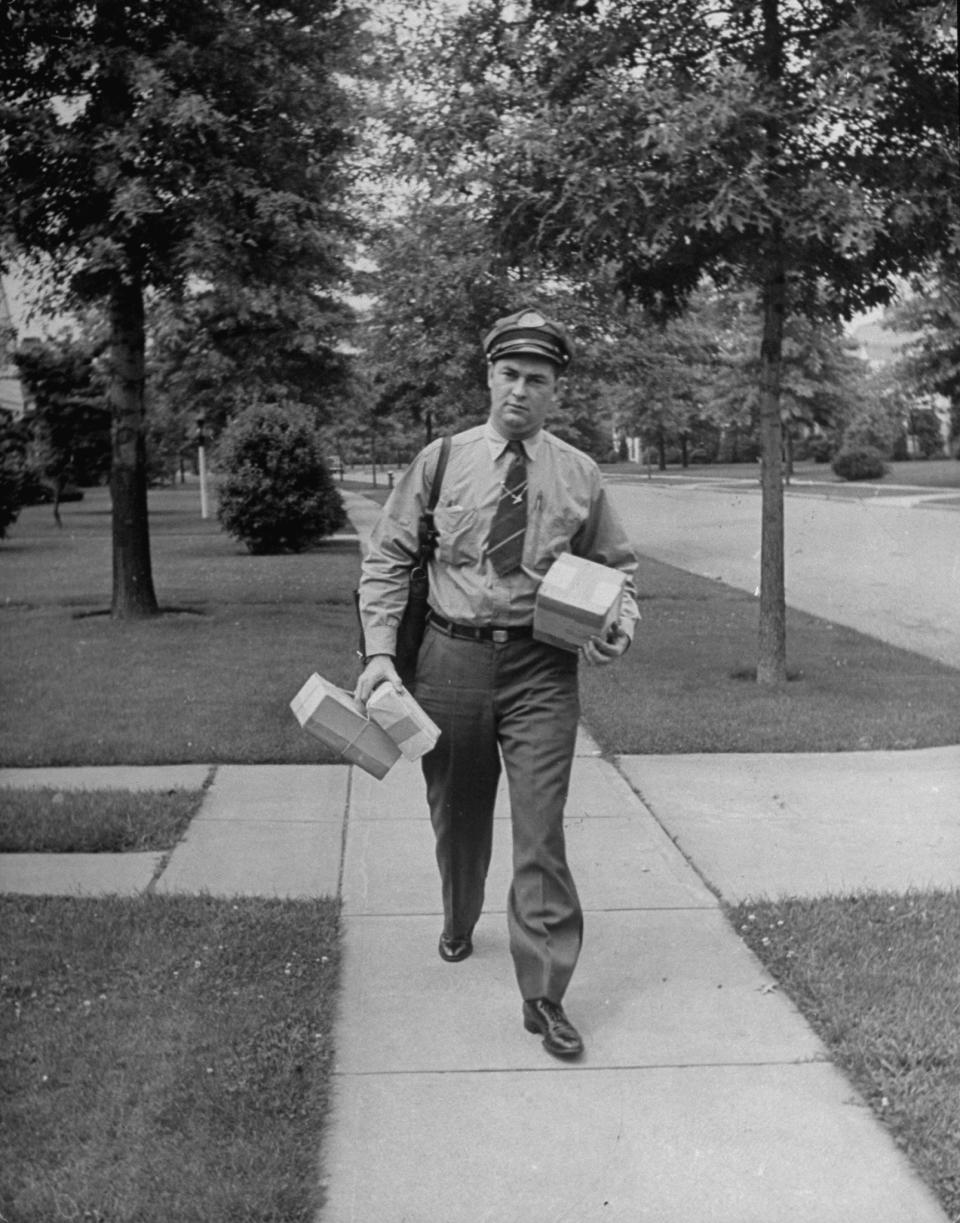
Early incarnations of the mail were plagued by all sorts of calamities, including members of congress who would use the post office to distribute their speeches and so-called “special agents” who spied on postmasters “to make sure they encouraged customers to vote for the political party in power with sufficient zeal,” writes Leonard. Trump’s favorite president, Andrew Jackson, who was elected in 1828, installed one of his own men as Postmaster, doled out jobs to his supporters, and directed regional Postmasters to suppress mail that went against his policies. “Letter carriers and post office clerks acquired their jobs through partisan ties… he was expected to be a campaign worker first, a letter carrier second,” according to a history written by the National Association of Letter Carriers.
Much of that changed in 1863 when Postmaster General Montgomery Blair instituted the modern version of the Post Office, which started delivering mail for free within cities—the old system required people to pick up their mail at a local post office. Joseph William Briggs, a postal clerk in Cleveland, Ohio, came up with the idea while serving a long line of frostbitten women hoping to hear news from the frontlines of the Civil War, and free delivery introduced letter carriers as frequent home visitors. Up to that point, postmen could wear what they chose, but in 1868, Postmaster General Alexander W. Randall decreed that uniforms would be “invariably worn by the letter carriers while on duty.” The uniforms were crucial to national legitimacy: “The uniform declares each carrier to be a known entity, backed by a reputable institution, working in the performance of a public service,” the Smithsonian writes.
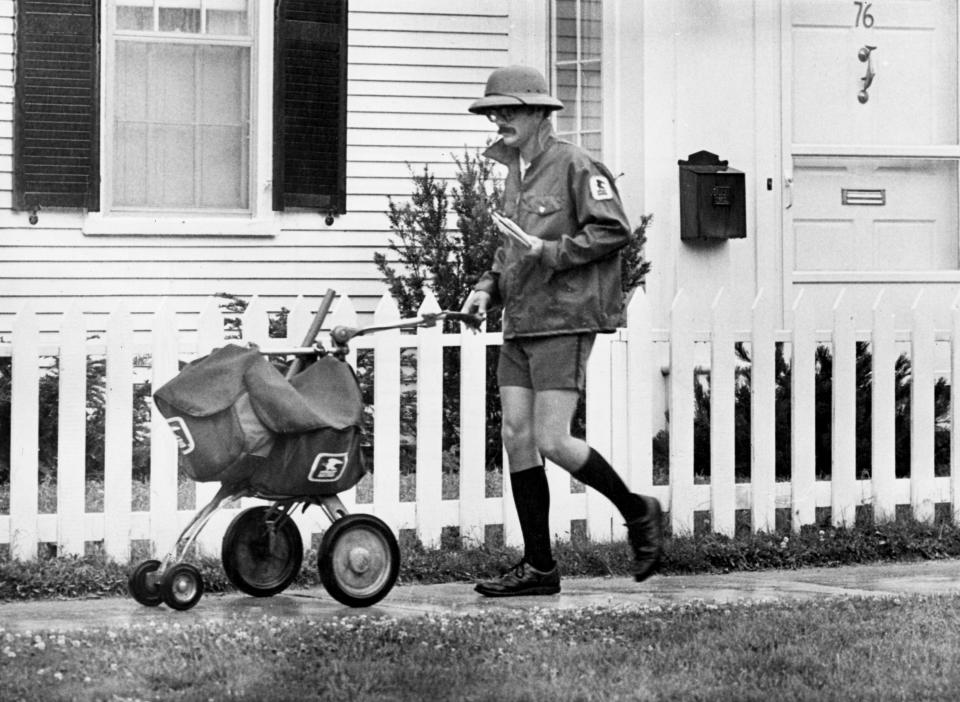
The first Postal Service uniform had exacting standards. Mail carriers in the late 1800s needed a ruler, or a very good tailor, to get dressed for their jobs. They trudged through snow, heat, and rain wearing a “sack suit” and vest. Guidelines were specific: the jacket was required to have two pockets at each side and one on the left breast with black trim exactly one inch, the pants called for a black half-inch stripe running down each leg, and the vest needed exactly seven—not eight, not six—oval-shaped buttons with the letters “P.O.” stamped on them. Notably, the uniforms were made in a bluish slate grey known as “Cadet Grey”: The color differentiated letter carriers from the deep-blue gear worn by other organizations like, say, the police. In the years following the uniform’s introduction in 1868, it was meticulously tweezered over to fit modern styles and challenges: uniforms for summer were built into the code in 1873, panama hats were brought into the fold, and a skirt was introduced for women in 1957.
Clothes became the most effective instrument for the USPS to earn the respect of a nation. Mirroring the military, in 1897 the post office started using service stars and stripes on uniforms to mark years of service. Also like the military, Post Office uniforms were designed to endure the harshest conditions. Some early advertisements even boasted that they were made in the same factory as military uniforms. In pop culture, the distinction was sometimes blurred: Cheers’s Cliff Clavin, one of the most famous depictions of a mailman, was “the kind of guy who wishes he'd been a combat Marine, but maybe he was nearsighted or had flat feet and became a mailman. He loves the respect he gets,” the show’s creator John Ratzenberger told The Associated Press in 1985.
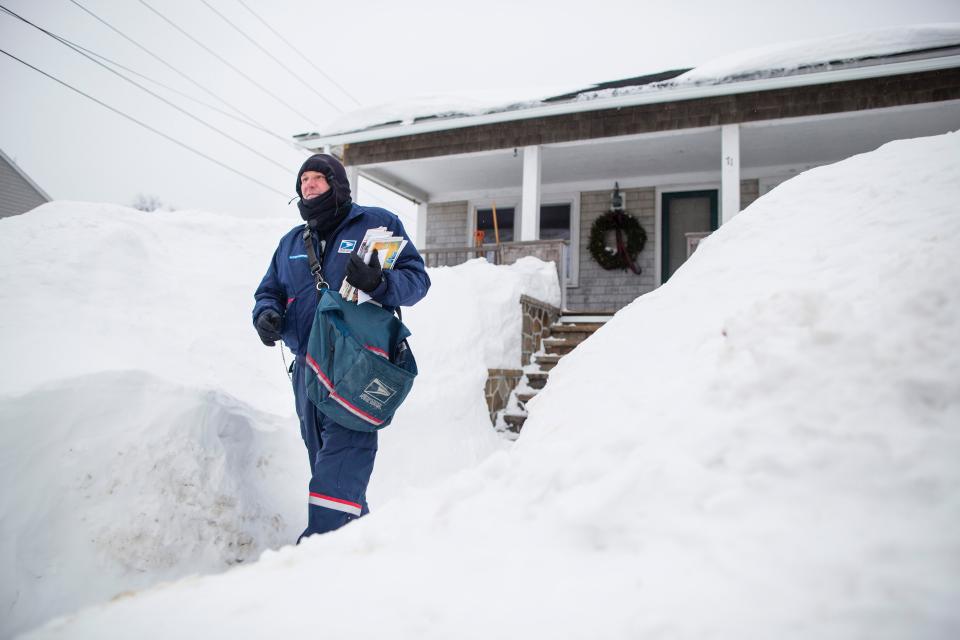
The modern USPS uniform wasn’t put into place until 1991. “A new look for a new century,” the USPS called it. Post office worker outfits were made over in navy blue, referred to as “postal blue” in current guidelines. During the first season of Project Runway, in 2005, contestants were challenged to redesign the USPS uniform and found the goals of modern-day letter carriers weren’t so different from their predecessors. “I’m looking for comfort, something easy to move around in, and I’m representing the Postal Service so I want to look nice,” one employee in the episode says.
Memes today branding the post office as undeterred by fascism are funny, but they also reflect a historical truth. When the uniform was first created, it helped formalize an organization and “end fraud in the system,” according to The Smithsonian. In other words, the uniform was meant to help remedy one of the mail’s original sins: its use as a weapon for political gain.
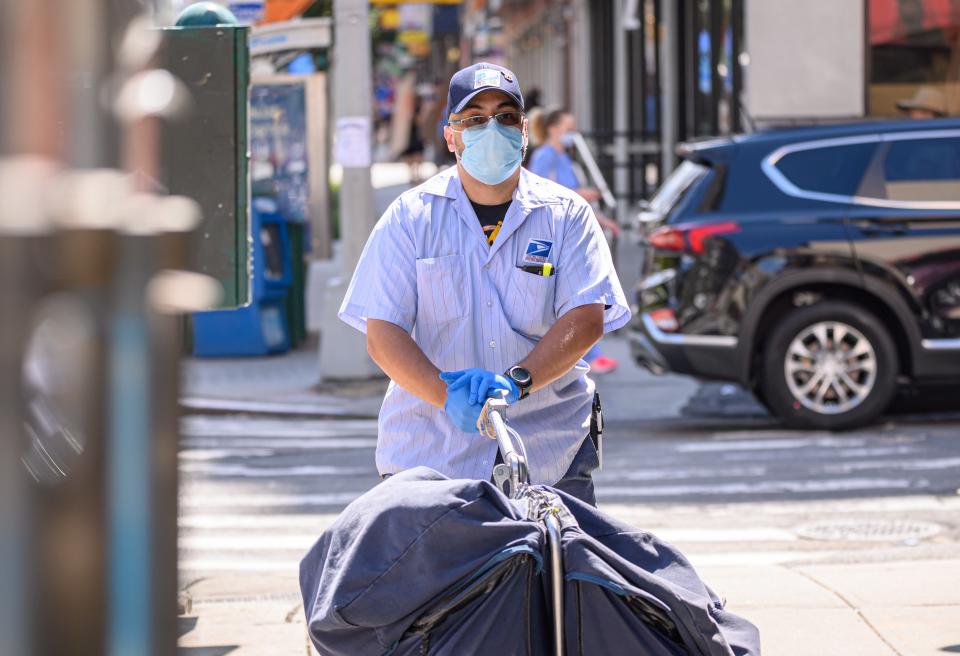
Originally Appeared on GQ

